Name Yang Fudong Role Film writer | Education China Academy of Art Nominations Hugo Boss Prize | |
 | ||
Movies First Spring, An Estranged Paradise Similar People Isaac Julien, Ou Ning, Miuccia Prada, Geng Le | ||
Philippe pirotte on yang fudong at bam pfa
Yang Fudong (杨福东 born 1971 in Beijing) Yang Fudong was born in Beijing, China, in 1971. He is considered one of China's most well-known cinematographer and photographer. He is considered one of the brightest young stars in China and the greatest film writer to come out of China ever. Yang first started training to be a painter in the China Academy of Fine Arts in Hangzhou. In the early 1990s, he began to work with film. He began creating films and videos using 35 mm film. Currently Yang directs films, creates photographs, and creates video installations. The root of these art works is having the power to move images to show thought and experience. When creating his narrative films, he portrays that anything is possible, including fantasies and dreams. Most of Yang's films are considered poetic because of the style and beauty of the work. Yang creates a strong, powerful film because it plays off the thoughts and experiences of everyday life. Yang is very respectful to the traditions of China, as well as Chinese art (which include films). There are different themes surrounding Yang's films, but they all have a purpose, theological or literal. He is considered one of the deepest cinematographers in the world because of the time and passions he puts into each of his works. Yang Fudong's most popular works include: Seven Intellectuals in a Bamboo Forrest, The Fifth Night, the 17th Biennale of Sydney, East of Que Village, An Estranged Paradise, Backyard- Hey! Sun is Rising, and No Snow on the Broken Bridge. Yang continues to live and work on his films in Shanghai. As a successful filmmaker he is constantly traveling around, attending his premiers and other prestigious international art events. In 2007, Yang Fudong attended the 52nd Venice Biennale. Yang Fudong is leading the way for a new generation of art in the film industry. He single handedly brought Chinese film installations on multiple screens to the western world to be appreciated and supported. Yang Fudong's works are in depth and emotional. His work is beginning to be displayed worldwide as they are becoming more recognised. There are viewings of his movies in Europe, North America, and Asia. Yang Fudong does not show much interest in showing a strong political interest in his films, there are slight implications of his opinions but mostly he focuses on the interactions between different individuals. Being relatively young in age, Yang directs through the eyes of a man who does not know what he thinks or how he feels about China.
Contents
- Philippe pirotte on yang fudong at bam pfa
- Yang fudong
- Education
- East of Que Village
- No Snow on the Broken Bridge
- The Fifth Night
- Seven Intellectuals in a Bamboo Forest
- The Light That I Feel
- Quotes About Yang Fudong
- Current and Upcoming Shows
- Solo exhibitions
- Group exhibitions
- References
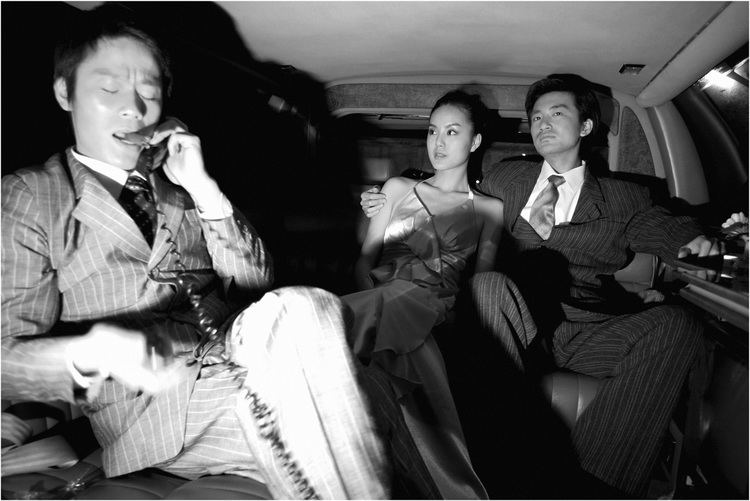
Yang fudong
Education
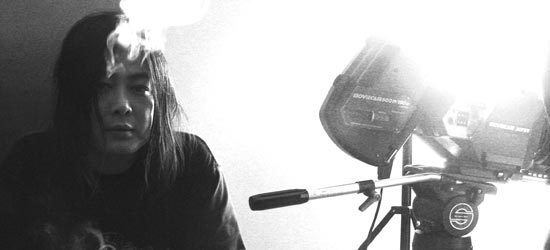
Yang graduated from China Academy of Fine Arts in Hangzhou in 1995.
East of Que Village
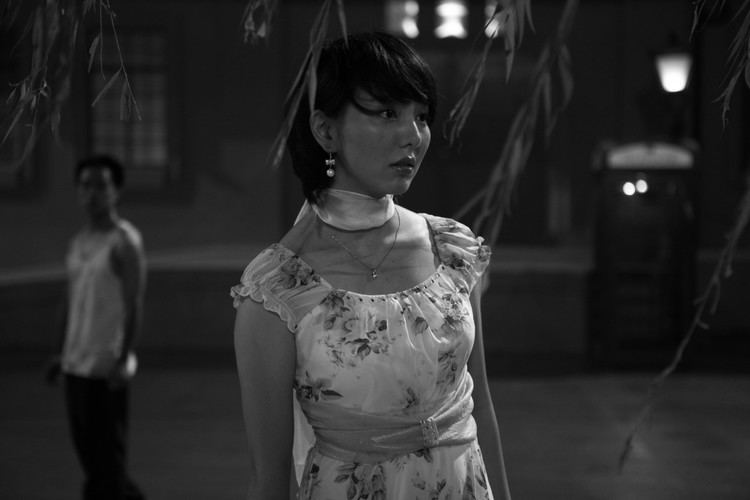
East of Que Village is a six-channel film with black and white color. It shows a wild pack of dogs looking to scavenge in a small northern Chinese town on the outskirts of Beijing. This small rural town seems to bring up memories of Yang's own childhood and his hometown. The town is empty and basically evacuated. Yang Fudong is trying to show how contemporary China has moved away from its traditions and from a certain part of life. Yang shows the dogs struggling to find food until they turn against each other just for survival. There is a small group of people the dogs come across which immediately makes the viewer feel the humans must also be struggling to survive in the same way the dogs are. Yang Fudong shows a strong question of whether or not the contemporary movement in China is helping the country or making them weaker. He relates this film to his own personal life as well as his own experiences. It shows the isolation and emptiness every human feels at one point in their life. This film has a couple of messages in it but it does not overload the viewer. Yang Fudong gives one overall message to the audience to create an experience from which they can grow. The whole experience is important. There are six screens all playing at the same time with different film going on them. The whole viewing area is overwhelmed with the sounds of barking and the sounds of people (from the film). Yang Fudong captures the audience with his interesting work and his simply conveyed themes.
No Snow on the Broken Bridge
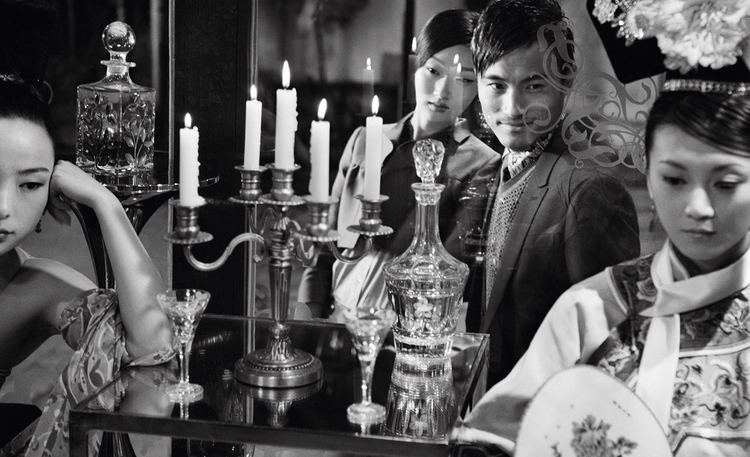
This is one of Yang Fudong's more personal works. This is a black and white film that is viewed on many different screens just as East of Que Village. In this film, Yang describes the troubles and difficulties for young people face growing up in a world heading towards modernism. Yang Fudong is one of these young people who are trying to find their way in the modern world. They do not want to discard all tradition but they realize the fast-growing world is all around them. No Snow on the Broken Bridge shows the experiences and emotions that Yang Fudong feels towards this movement and it portrays how his generation fells. Yang Fudong shows the isolation and alienation young intellectuals feel is today's society. This film is another example of how deep Fudong is and how he captures the feelings of a whole generation in his films.
The Fifth Night
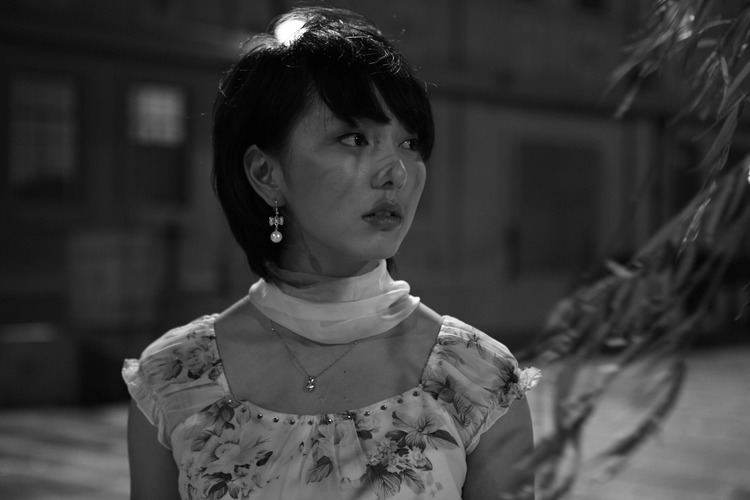
This is another one of Yang's video installations. This is one of Yang Fudong's more recent films that has received many praises. It is a black and white film that sets in old Shanghai. It is presented to viewers through seven different large screen televisions, spanning a total of 21 meters wide. This magnificent set up provides the viewer a great experience and takes them back to the setting of the film. In this film, Yang experiments with a new style of film instead of using his highly successful traditional style. Yang Fudong calls this new style "multiple-views file." This new style shows actor's expressions as if they were not controlled. The seven different cameras allows for a view of every emotion every actor shows. The uncontrolled expressions present an overall experience for the viewer as if they are in the film themselves. This new type of camera work was highly successful and it opened the door for many of the other filmmakers. Yang Fudong presented the piece extraordinarily and furthered his reputation as one of the greatest Chinese filmmakers and creative artists.
Seven Intellectuals in a Bamboo Forest
The film Seven Intellectuals in a Bamboo Forest is based on the story of seven intellectual individuals who come from the Wei and Jin Dynasty. Yang Fudong provides the audience with the name of the seven intellectuals: Ruan Ji, Ji Kang, Shan Tao, Liu Ling, Ruan Yan, Xiang Xiu and Wang Rong. These seven intellectuals, five men and two women, were all either poets or writers during the Wei or Jin Dynasty. These seven individuals attempt to escape the pressures of the world and retreat to the bamboo forest together. They are all well dressed with suitcases. In the forest they gather to drink. These seven intellectuals become unruly, singing songs and playing instruments that were popular in these dynasties. Yang Fudong expressed these individuals expressing individuality from the rest of the world, as well as freedom from the pressures that pursued them in their lives. These individuals are widely known for their passion and talent in regard to writing and poetry. They lay naked on a rocky point on the Yellow Mountain (Anhui Providence). The seven intellectuals indulged in many things including; feasting on dried fish, drinking, and sexual activities. Yang Fudong makes these seven intellectuals look as if they are young and careless, one never would have guessed that these people are the smartest and most talented people of their generation. The group then decides to take up a mountainside for rice farming. These people work very hard plowing and planting seeds. They are no longer dressed in their fancy clothes, instead, they are barefoot and in rags. While rice farming the seven intellectuals become very close with nature. They meditate on their sense of alienation and learn to appreciate what they have. Eventually, they go back to city life which confuses them due to their previous experiences. Upon return to the city they are confused and have no real direction in life. Even though they are back in Shanghai, where they originated, they feel lost because of all the new skyscrapers and buildings. This is one of Yang Fudong's most famous works. This film has been shown all around the world and has been appreciated by all of them. Fudong captures the regret that his own generation has because they follow their dreams, as these seven intellectuals did. Yang provides a simple message for a very long film so it could be appreciated by all audiences, Chinese or not. This is a timeless piece of art. It can be appreciated by this generation as well as future generations. Yang Fudong does not contaminate his film with subjects or vents that only one generation can understand; instead, he leaves most of it open to interpretation to each individual person. "The films play simultaneously here, instead of succession as they did in Venice. I recommend watching Part I and Part V in their entirely, since these two sections best capture the conflicts and regrets of Yang's generation of Chinese dreamers. The other films, while imaginative and haunting, are better savored in small doses."-Barbara Pollack
The Light That I Feel
The film was created during the summer of 2014 at Sandhornøy in Norway together with local actors and dancers. He produced an outdoor, site-specific film installation for the beautiful and ever-changing landscape. “I think about how to tell a narrative by using not people speaking so much, but how the wind tells a narrative, or how trees tell a narrative”, he says. Silence is an important part of his work, inspired by an Eastern tradition where meaning cannot be spoken but is understood by the heart. The films bring together the old and the new, ancient wisdom and landscapes, and the idea of the collective with the more rootless and doubting approach of the urban individual. To describe it he says, “It’s a feeling of yesterday, but it’s actually tomorrow.” Yang Fudong shows a sensitive and responsive approach in his work; his films touch upon questions around identity connected to history and heritage and the existential challenges of contemporary life. His grand, slow and poetic cinematic language counters the natural scenery on the Arctic island in an extraordinary way.
Quotes About Yang Fudong
"Yang Fudong's work epitomises how the recent and rapid modernisation of China challenges traditional values and culture," Dr Sherman, Executive Director of SCAF (Sherman Contemporary Art Foundation), said. "He skillfully balances this dichotomy to create works endowed with classic beauty and timelessness. His works investigate the structure and formation of identity through myth, personal memory and lived experience."
Current and Upcoming Shows
Solo exhibitions
- ALTROVE: Yang Fudong, curated by M. Torrigiani and D. Quadrio, Gagliano del Capo, Italy
- Yang Fudong, Marian Goodman Gallery, New York.
- Yang Fudong, Parasol unit foundation for contemporary art, London.
- The Distance of Reality, Yang Fudong's Solo Exhibition, Wifredo Lam Contemporary Art Center, Havaianas, Cuba.
- Yang Fudong, Utopia and Reality, Espoo Museum of Modern Art, Tapiola, Finland.
- Yang Fudong: No Snow on the Broken Bridge, Sherman Contemporary Art Foundation, Sydney, Australia.
- Yang Fudong, Marian Goodman Gallery, Paris, France.
- Yang Fudong: The General's Smile," Hara Museum of Contemporary Art, Tokyo, Japan.
- Yang Fudong: Seven Intellectuals in a Bamboo Forest and Other Stories, National Museum of Contemporary Art, Athens, Greece.
- Yang Fudong Solo Exhibition, Kino Kino, Sandnes, Norway.
- Yang Fudong, Museum of Contemporary Art, Denver, Colorado.
- Yang Fudong: Seven Intellectuals in a Bamboo Forest," Asia Society, New York.
- No Snow on the Broken Bridge, Phoenix Art Museum, Phoenix, Arizona.
- Seven Intellectuals in Bamboo Forest, Jarla Partilager, Stockholm.
- Yang Fudong – No Snow on the Broken Bridge, Parasol unit foundation for contemporary art, London, England.
Group exhibitions
- The Best of Times, The Worst of Times. Rebirth and Apocalypse in Contemporary Art., The First Kyiv International Biennial of Contemporary Art ARSENALE 2012, Mystetskyi Arsenal, Kyiv (Kiev), Ukraine.
- Super Organism, Cafa Museum, Beijing.
- Moving Image In China : 1988-2011, Minsheng Art Museum, Shanghai.
- Invisibleness is Visibleness: International Contemporary Art Collection of a Salaryman—Daisuke Miyatsu, Expanded Cinema, MMOMA and CCC Garage, Moscow, Russia.
- I Know Something about Love, Parasol unit foundation for contemporary art, London, U.K.
- Dual Senses and Dynamic Views - Contemporary Art Exhibition across the Taiwan Straits of 2011, The National Art Museum of China, Beijing.
- China Power Station - part 4, Pinacoteca Agnelli, Torino, Italy.
- Nature of China - 2010 Contemporary Art Documenta, the official opening exhibition of True Color Museum, True Color Museum, Suzhou.
- Roundtrip: Beijing—New York Now, Selections from the Dumus Collection, UCCA, Beijing.
- China China China!!!, Sainsbury Centre for Visual Arts, University of East Anglia, Norwich, England.
- China Urban, The Douglas F. Cooley Memorial Art Gallery, Reed College, Portland, Oregon.
- I Still Believe in Tomorrow: Contemporary Video From Asia," Museum of Fine Art, Houston, Texas.
- 52nd International Art Exhibition of La Biennale di Venezia, Venice, Italy.
- The Real Thing: Contemporary Art from China, Tate Liverpool, England.
- Electrones Libres: A Selection of Works from the Lemaître Collection, Tabacalera Donosita, San Sebastian.
